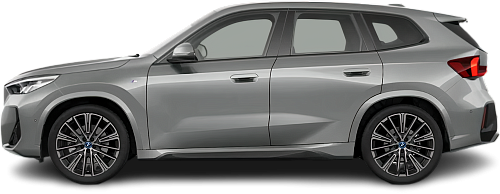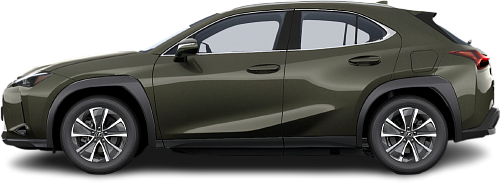USA EV Comparison: BMW iX1 eDrive20 vs Lexus UX 300e
Struggling to Decide? Let AI Help!
Your AI Summary Is Ready!
General Info
While both vehicles are currently in production, they are not sold in the United States.
The two vehicles share the same body style: SUV.
| Property | BMW iX1 eDrive20 | Lexus UX 300e |
|---|---|---|
| Years of Production | 2023-… | 2023-… |
| Current Status | Produced | Produced |
| Country of Manufacture | Germany, India, China | Japan |
| Body Style | SUV | SUV |
| Market Availability | EU | EU |
| GCC Score | 6.1 | 5.5 |
Range and Efficiency
The BMW iX1 eDrive20 (2023-…) boasts a greater real-world range, a larger battery, and superior energy efficiency compared to the Lexus UX 300e (2023-…).
| Property | BMW iX1 eDrive20 | Lexus UX 300e |
|---|---|---|
| Range (WLTP) | 295 mi | 280 mi |
| Range (GCC) | 245 mi | 242 mi |
| Battery Capacity (Nominal) | 66.5 kWh | 72.8 kWh |
| Battery Capacity (Usable) | 64.7 kWh | 64 kWh |
| Efficiency per 100 mi | 26.4 kWh/100 mi | 26.4 kWh/100 mi |
| Efficiency per kWh | 3.79 mi/kWh | 3.78 mi/kWh |
| Range and Efficiency Score | 7.2 | 7.1 |
Charging
Both vehicles utilize a standard 400-volt architecture.
The BMW iX1 eDrive20 (2023-…) offers faster charging speeds at DC stations, reaching up to 128 kW, while the Lexus UX 300e (2023-…) maxes out at 50 kW.
The BMW iX1 eDrive20 (2023-…) features a more powerful on-board charger, supporting a maximum AC charging power of 11 kW, whereas the Lexus UX 300e (2023-…) is limited to 6.6 kW.
| Property | BMW iX1 eDrive20 | Lexus UX 300e |
|---|---|---|
| Max Charging Power (AC) | 11 kW | 6.6 kW |
| Max Charging Power (DC) | 128 kW | 50 kW |
| Architecture | 400 V | 400 V |
| Charge Port | CCS Type 2 | CHAdeMO |
| Charging Score | 5.8 | 4.3 |
Performance
Both vehicles are front-wheel drive.
Both cars offer the same motor power, but the Lexus UX 300e (2023-…) achieves a faster 0-60 mph time.
| Property | BMW iX1 eDrive20 | Lexus UX 300e |
|---|---|---|
| Drive Type | FWD | FWD |
| Motor Type | PMSM | PMSM |
| Motor Power (kW) | 150 kW | 150 kW |
| Motor Power (hp) | 201 hp | 201 hp |
| Motor Torque | 182 lb-ft | 221 lb-ft |
| 0-60 mph | 8 s | 7.2 s |
| Top Speed | 106 mph | 99 mph |
| Performance Score | 3.4 | 3.5 |
Dimensions
The BMW iX1 eDrive20 (2023-…) is taller, but has a similar length and width to the Lexus UX 300e (2023-…).
The BMW iX1 eDrive20 (2023-…) boasts a more extended wheelbase.
| Property | BMW iX1 eDrive20 | Lexus UX 300e |
|---|---|---|
| Length | 177.2 in | 177 in |
| Width (with Mirrors) | 82.8 in | 81.8 in |
| Width (w/o Mirrors) | 72.6 in | 72.4 in |
| Height | 63.6 in | 60 in |
| Wheelbase | 106 in | 103.9 in |
Cargo and Towing
Neither car is equipped with a frunk (front trunk).
The BMW iX1 eDrive20 (2023-…) has a towing capacity of up to 1653 lb, whereas the Lexus UX 300e (2023-…) is not officially rated for towing in the US.
| Property | BMW iX1 eDrive20 | Lexus UX 300e |
|---|---|---|
| Number of Seats | 5 | 5 |
| Curb Weight | 4276 lb | 4035 lb |
| Cargo Volume (Trunk) | 17.3 ft3 | 13 ft3 |
| Cargo Volume (Max) | 52.8 ft3 | - Cargo Volume (Max) |
| Cargo Volume (Frunk) | - Cargo Volume (Frunk) | - Cargo Volume (Frunk) |
| Towing Capacity | 1653 lb | - Towing Capacity |
| Cargo and Towing Score | 6.5 | 5.5 |




